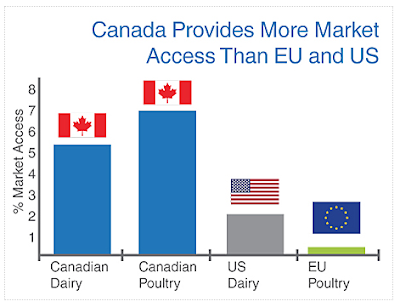
These two recent tweets from Donald Trump regarding Canada’s farmers…
Based on Justin’s false statements at his news conference, and the fact that Canada is charging massive Tariffs to our U.S. farmers, workers and companies, I have instructed our U.S. Reps not to endorse the Communique as we look at Tariffs on automobiles flooding the U.S. Market!
— Donald J. Trump (@realDonaldTrump) June 9, 2018
PM Justin Trudeau of Canada acted so meek and mild during our @G7 meetings only to give a news conference after I left saying that, “US Tariffs were kind of insulting” and he “will not be pushed around.” Very dishonest & weak. Our Tariffs are in response to his of 270% on dairy!
— Donald J. Trump (@realDonaldTrump) June 9, 2018
…suggest that Canada’s decades-old dairy supply management system is being threatened by American trade policies. Let’s look at a bit of background about supply management and then take a closer look at how the U.S. farm industry is being subsidized by Washington. While I don’t have specific data on how Washington is subsidizing its dairy industry, I think that you will find the information on overall agricultural subsidies to be food for thought (poor pun, indeed).
Supply management is a government-mandated program which was founded in 1971 under the Pierre Elliot Trudeau government. The purpose of this scheme is to control the farming industry in Canada (and other nations) by controlling the supply of commodities, most particularly milk, cheese, eggs and poultry in Canada. Through the imposition of production limits, prices remain higher and governments avoid the costly necessity of directly subsidizing farmers with cash payments. In addition, supply management must entail controls on imports that would otherwise flood the domestic market, pushing prices down and reducing farm incomes. Supply management gets mixed reviews; while farmers are in favour, and tout the fact that Canada’s dairy products are of better quality, many consumers feel that they pay higher prices for dairy products than they would under a free-market system.
Here’s what the Dairy Farmers of Canada, the organization that represents Canada’s roughly 17,000 member dairy farmers and acts as its lobbying and marketing force, have to say about supply management:
“Canada’s supply management system provides balance in the dairy sector by enabling Canadian dairy farmers to act collectively to negotiate price and adjust milk production to meet consumer demand.
While farmers around the world face unexpected and inexplicable wild market fluctuations, Canadian farmers sell their milk at constant and stable prices.
As a result, Canadian dairy farming is one of the few agricultural sectors that are self-sufficient – providing income security for farmers and requiring no government subsidy. This means Canadian farmers can invest in their farms, communities and Canada.”
Here are some of the key facts as presented by Dairy Farmers of Canada:
Here is a graphic which shows how Canada provides more market access for imports of dairy and poultry products than either the United States or the European Union:
Dairy Farmers notes that, despite supply management, Canada imports a very substantial portion of its dairy products as shown on this table:
Roughly 8 to 10 percent of Canada’s total dairy products are imported tariff-free.
Here is a table showing the value and quantity (in kilograms) of butter imported into Canada over the past five years and the source nation of the butter:
Here is the same data for cheddar cheese:
Here is the same data for milk:
As you can see in each case, the United States is the primary source of Canadian imports of these three products.
Now, let’s completely switch gears and look at how the United States government subsidizes American farmers. Thanks to the Environmental Working Group, we have a complete database of all subsidies provided to American farmers since 1995.
Here is a listing of the top farming industry recipients of USDA subsidies:
In total, 3,916,900 recipients shared in over $353.5 billion in USDA subsidies over the two decade period from 1995 to 2016.
Let’s break down the data and look at a key aspect of farm subsidies in the United States. Here is a graph showing the commodity subsidies given to the farming industry on an annual basis in the United States between 1995 and 2016:
In total, over the two decades, commodity subsidies paid to the farming industry totalled $198.2 billion.
Here are the programs included in the commodity subsidy payments:
Here is a list of the 20 largest recipients of commodity subsidies between 1995 and 2016:
The top 10 percent of commodity payment recipients were paid 77 percent of the $198.2 billion worth of commodity subsidies.
Lastly, here is a table showing the states which received the most commodity subsidy payments over the two decade period:
As you can see, Iowa, Texas, Illinois and Nebraska accounted for nearly one-third of all commodity subsidy payments.
After you’ve looked through this data, it’s pretty hard not to draw the conclusion that both Canada and the United States governments play a heavy role in their respective farming industries through the use of supply management and subsidies. Gone are the days of the small, 100 acre mixed-crop family farm. In the new economic reality, farms have become major industrial operations that rely on government intervention as part of their business model. While the Trump Administration is pointing the finger at Canada’s dairy industry, it need look no further than its own farming industry to see that it is clearly a case of the pot calling the kettle black.
Click HERE to view more.
You can publish this article on your website as long as you provide a link back to this page.

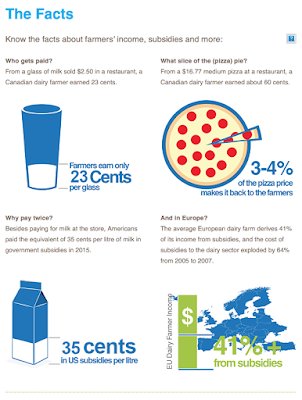
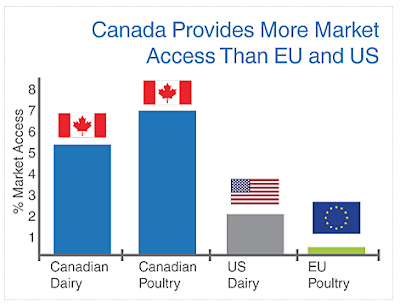
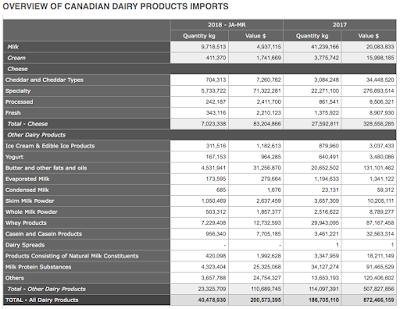
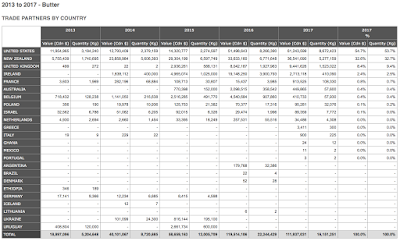
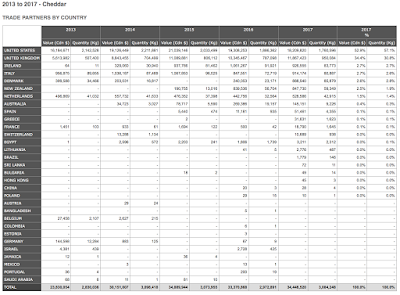
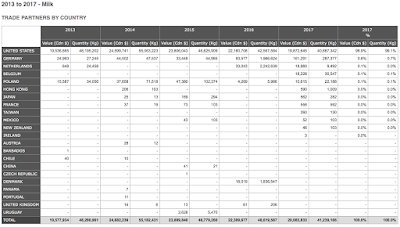
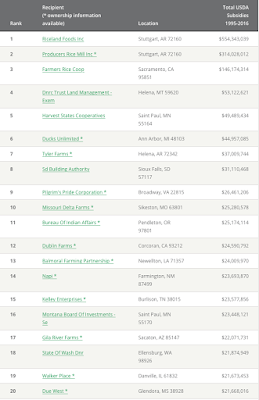
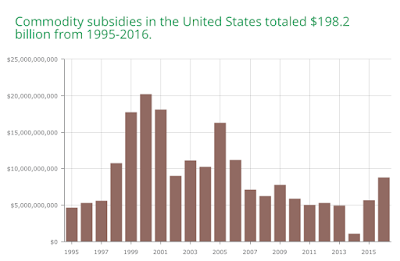
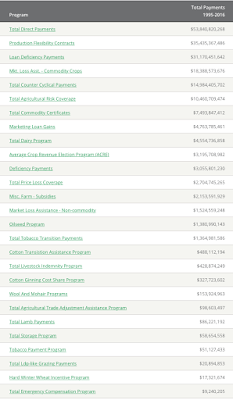
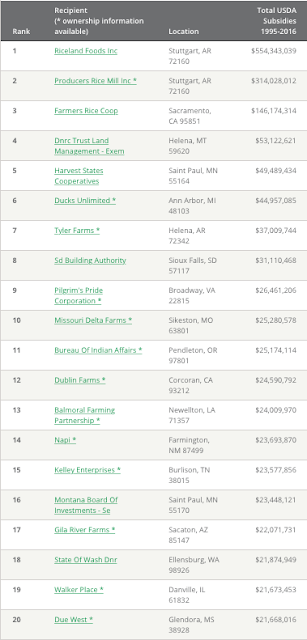
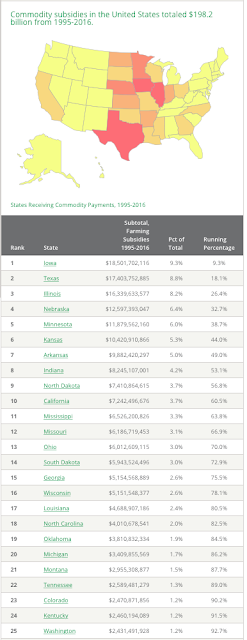
Be the first to comment